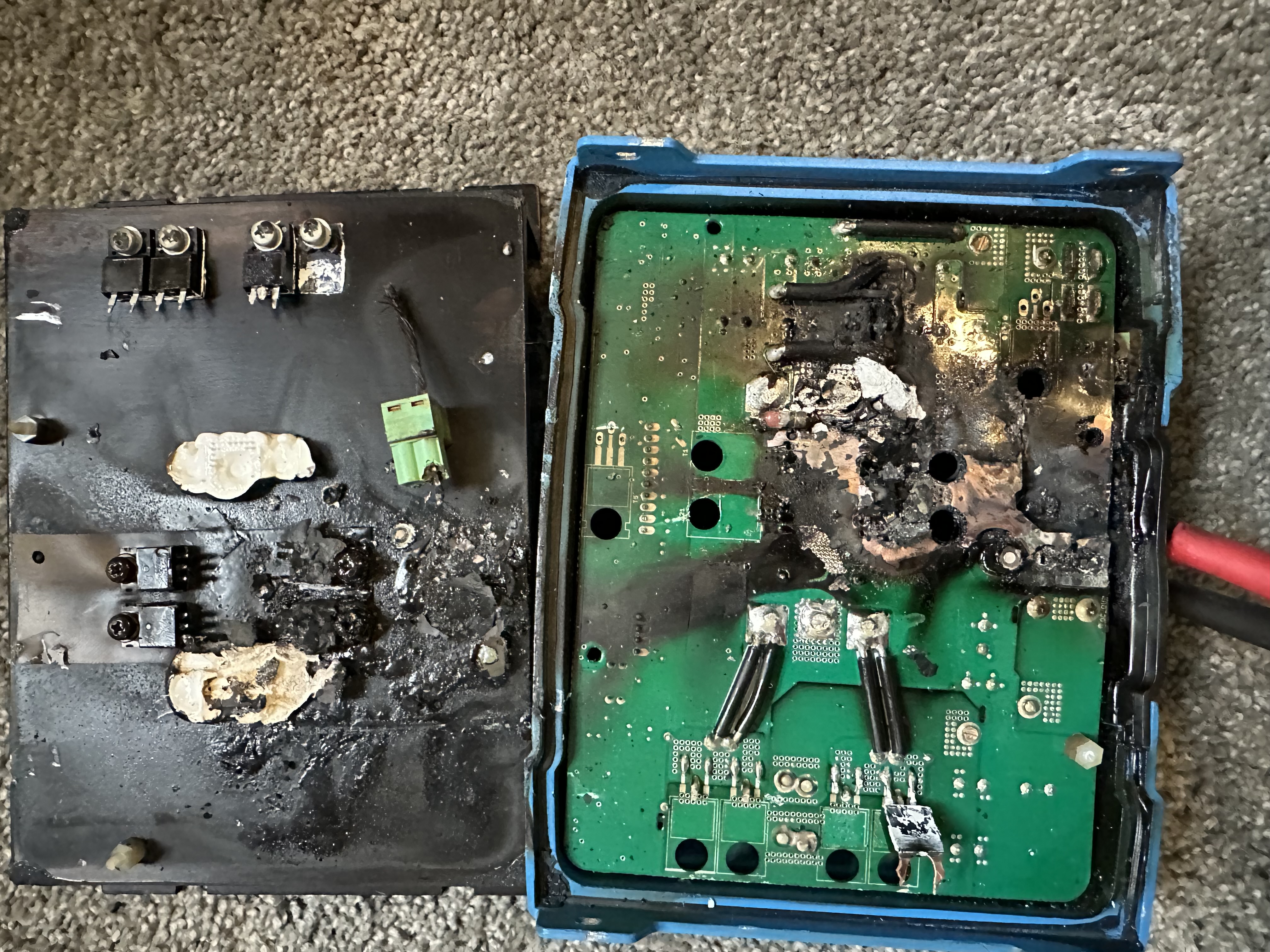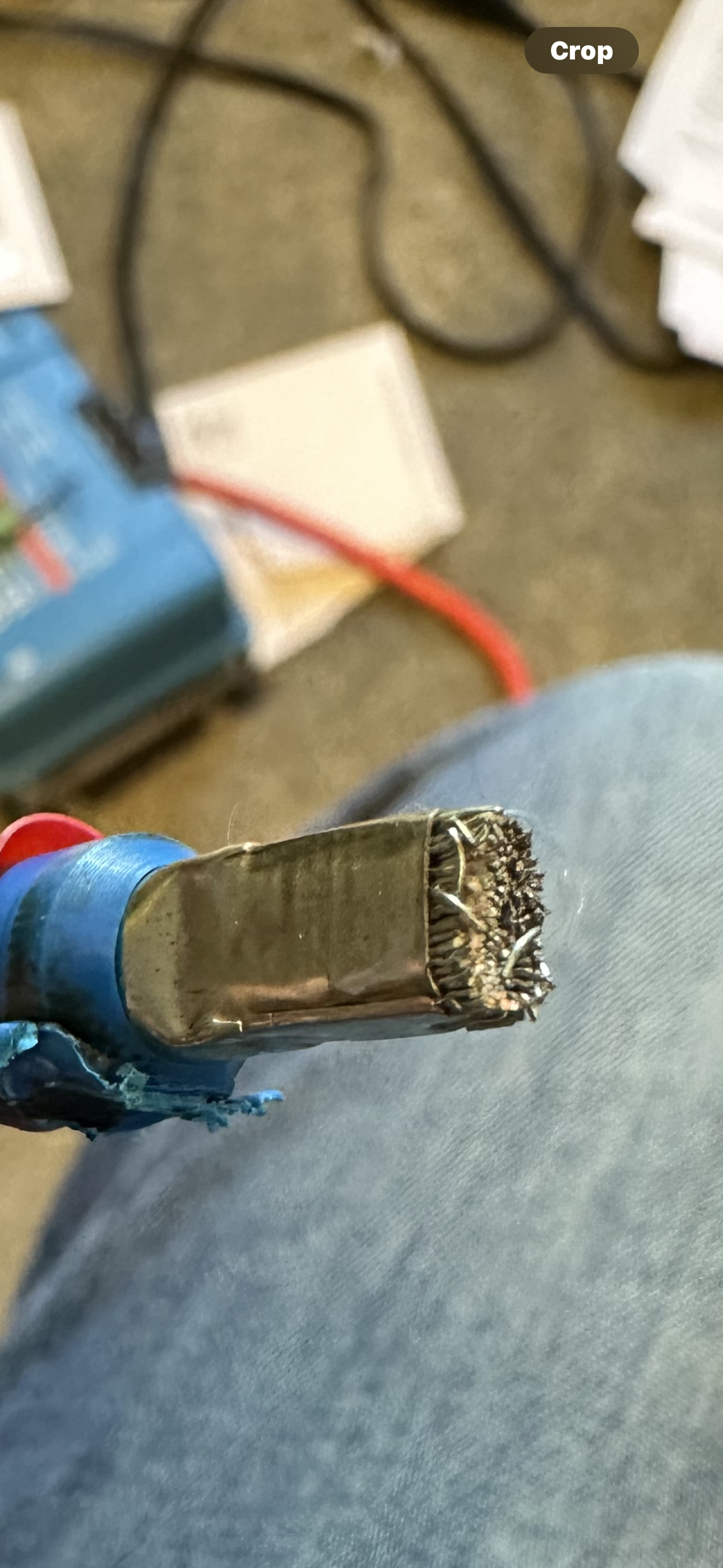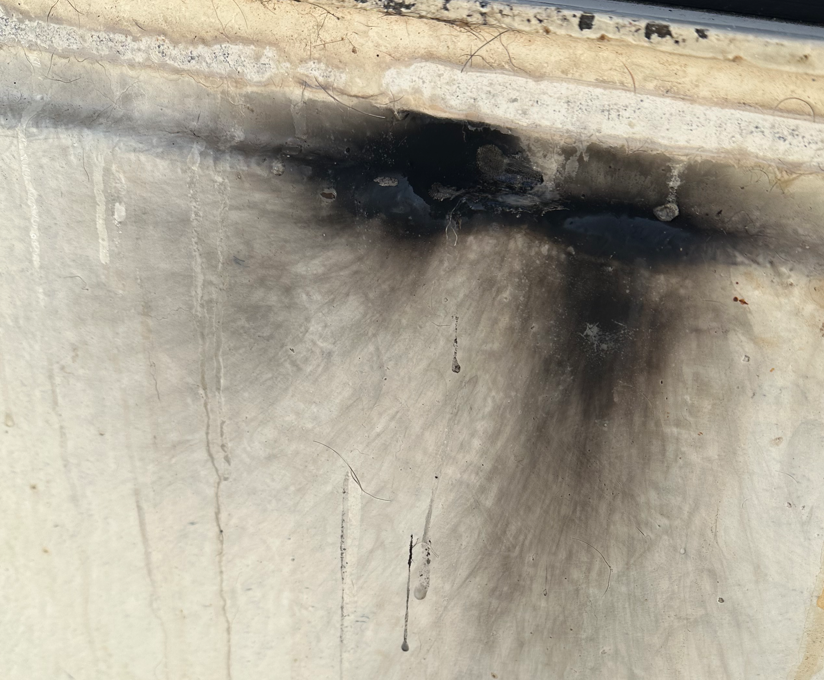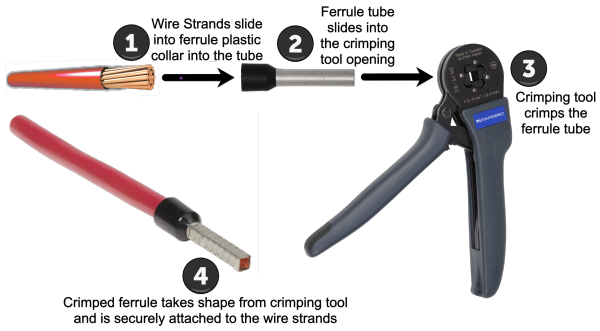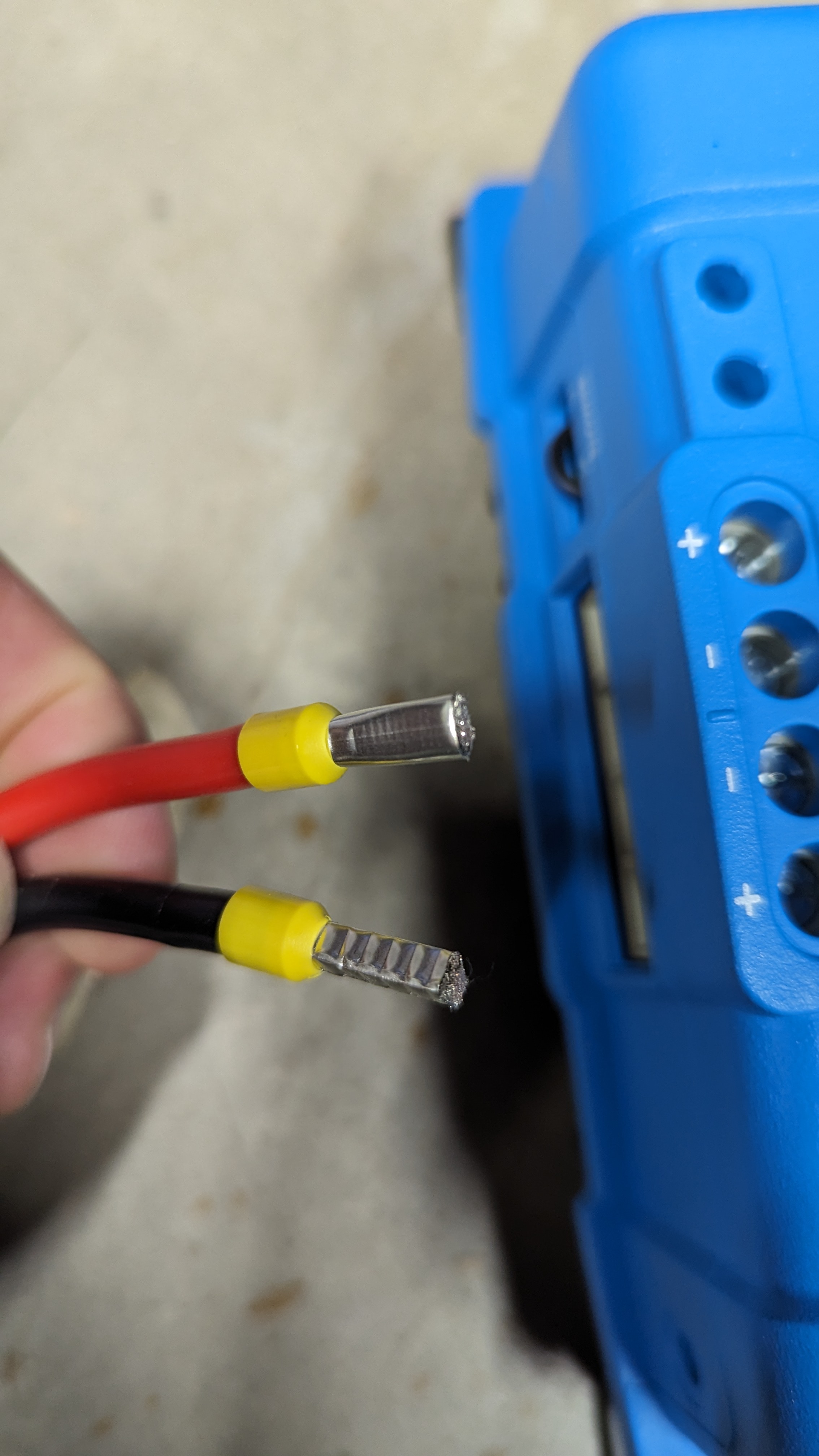Victron Energy Orion-Tr Smart 12/12-Volt 30 amp
I have had the 12/12-Volt 30 amp installed on my boat since March of 2023. Worked well since install and the unit is installed in a well-ventilated area. Last week, started up the boat and after 90 seconds or so, the Engine instruments alarmed and then died, I then started smelling smoke. I opened the hatch where the Victron installed and thick arid smoke was coming from within the Victron. The 40A fuses on the input nor the 40A on the output was blown. The smoke and heat were bad, it was about to catch on fire. I tripped the breaker to the input and the smoke stopped shortly after. The unit is toast. The input (+ -) and remote switch wires are melted in place. Reached out for support, but really cant believe this happened.
Unit is connected to a Volvo D3 190 with a 140A alternator.
Unit is used to charge a 200 AH LifeP04 bank, that was at 100% when this happened.
Unit is fused with 40A breakers.

